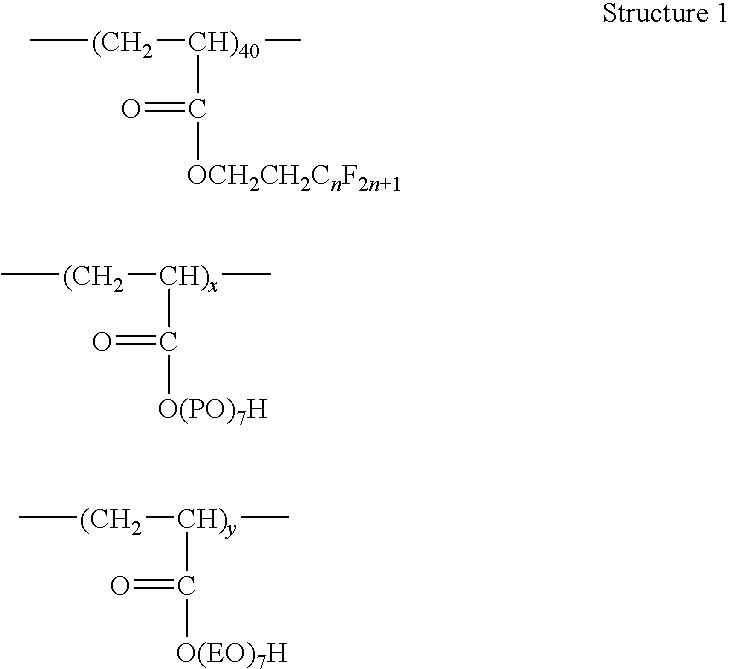Ink, color filter, and method for manufacturing the same, and display device
a technology of color filter and display device, which is applied in the direction of instruments, optical elements, inks, etc., to achieve the effect of high color purity and excellent chromaticity
- Summary
- Abstract
- Description
- Claims
- Application Information
AI Technical Summary
Benefits of technology
Problems solved by technology
Method used
Image
Examples
example 1
Method for Manufacturing a Deep-Color Composition for Forming Deep-Color Separating Walls
[0249]A deep-color composition K1 is obtained as follows. First, a K pigment dispersion 1 and propylene glycol monomethyl ether acetate are weighed out in the amounts shown in Table 1, then mixed with each other at a temperature of 24° C. (±2° C.) and stirred at 150 rpm for 10 minutes. Then, methyl ethyl ketone, a binder 2, hydroquinone monomethyl ether, a DPHA solution, 2,4-bis(trichloromethyl)-6-[4′-(N,N-diethoxycarbonylmethyl) amino-3′-bromophenyl]-s-triazine, and a surfactant 1 are weighed out respectively in the amounts shown in Table 1, then added in this order to the above pigment mixture at a temperature of 25° C. (±2° C.), and stirred at a temperature of 40° C. (±2° C.) at 150 rpm for 30 minutes, thereby giving the objective deep-color composition K1. The amounts shown in Table 1 are expressed in parts by mass, which are specifically as follows:
[0250][0251]Carbon black (trade name: NIPE...
examples 2 to 5
[0316]Liquid crystal display devices were prepared in the same manner as in Example 1 except that R inks 2 to 5, G inks 2 to 5 and B inks 2 to 5 were used respectively in place of the R ink 1, G ink 1 and B ink 1 used in Example 1.
example 6
[0318]The components in Table 8 below were mixed with one another and stirred for 1 hour with a stirrer. After stirring, the mixture was dispersed with an Eiger mill to give R pigment dispersion liquid 1, G pigment dispersion liquid 1, and B pigment dispersion liquid 1. The dispersing conditions were that zirconia beads of 0.65 mm in diameter were charged at a charging degree of 70%, the circumferential velocity was 9 m / s, and the dispersing time was 1 hour. The R pigment dispersion liquid 1, G pigment dispersion liquid 1, and B pigment dispersion liquid 1 thus prepared were further mixed according to the compositions shown in Table 9 and then stirred for 1 hour with a stirrer to give R ink 6, G ink 6 and B ink 6.
[0319]
TABLE 8R pigmentG pigmentB pigmentdispersion liquid 1dispersion liquid 1dispersion liquid 1C.I.P.R. 254 (trade name: IRGAPHOR RED B-CF,9.8——manufactured by Ciba Specialty Chemicals)C.I.P.R. 177 (trade name: CROMOPHTAL RED A2B,2.5——manufactured by Ciba Specialty Chemic...
PUM
| Property | Measurement | Unit |
|---|---|---|
| particle diameter | aaaaa | aaaaa |
| particle diameter | aaaaa | aaaaa |
| boiling point | aaaaa | aaaaa |
Abstract
Description
Claims
Application Information
 Login to View More
Login to View More - R&D
- Intellectual Property
- Life Sciences
- Materials
- Tech Scout
- Unparalleled Data Quality
- Higher Quality Content
- 60% Fewer Hallucinations
Browse by: Latest US Patents, China's latest patents, Technical Efficacy Thesaurus, Application Domain, Technology Topic, Popular Technical Reports.
© 2025 PatSnap. All rights reserved.Legal|Privacy policy|Modern Slavery Act Transparency Statement|Sitemap|About US| Contact US: help@patsnap.com


